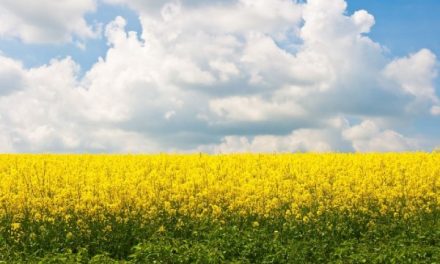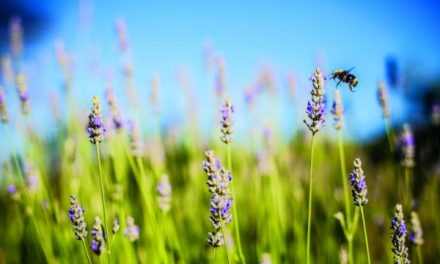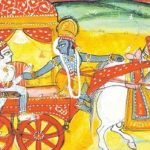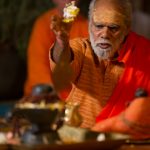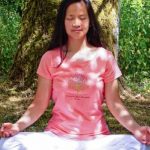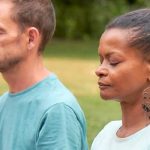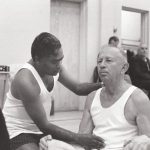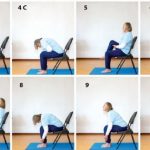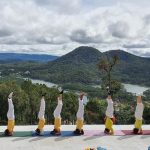PERMACULTURE AND YOGA
AN INTRODUCTION
BY JEREMY THOMPSON
Permaculture is a philosophy of working with, rather than against nature; of protracted and thoughtful observation rather than protracted and thoughtless labor; and of looking at plants and animals in all their functions, rather than treating any area as a single product system.”
– Bill Mollison
 Permaculture appeared in the mid 70’s as a symptomatic response to a quickly changing world.
Permaculture appeared in the mid 70’s as a symptomatic response to a quickly changing world.
While so many forests and wildlife reserves are exploited and transformed into large scale crop or cattle production, when natural resources are exploited faster than they are created by mother earth, in an age when the Human specie evolved into a being with so much influence and power that he is capable of creating long term damage on that very environment that feeds him, and when all of the natural laws of life seem to be disregarded in the face of the materialistic religion that we impose upon ourselves, permaculture is like a beam of sunlight through a dark sky.
It is not a method. Neither is it a step by step guide or a miraculous solution that can free man from himself. Well exploited, permaculture is a philosophy and a way of life that can help counter many growing problems such as scarcity of quality food, a life with no meaning separated from natural cycles, isolation from community and the growing energy crisis we are already experiencing.
As the founders, Bill Mollison and David Holgrem presented permaculture, it is a collection of natural and moral principles based on the sheer and scientific observation of mother nature.
Philosophies vulgarized
– or how the age of information extracts meaning from philosophical contexts It seems that in this modern day of age, information travels extremely quickly. This gives one access to so much knowledge if he is willing to look into it. It is also an opportunity for many to vulgarize philosophical systems in order to make them more accessible to the general public. However, it doesn’t make population more intelligent or aware.
If, to a certain aspect, it develops a form of consciousness concerning a specific matter, it simultaneously lessens the philosophy and turns it into a “to-do” method or a set of rules which are amputated from their philosophical and cultural background.
This obviously happened to yoga which is generally considered as a set of gymnastic postures you would practice once a week or at best once a day in order to improve your general health condition.
This is, however, an illusion. Yoga is much more than asanas, and one may practice asanas all day through, and never meet the state of Yoga, whilst another might not practice asanas at all but be a great yogi, despite the apparent disconnection with the yogic culture. This is what happened to permaculture when it went viral around the world. If I mention permaculture, you might visualize vegetables growing on lumps of earth, or gardens in which everything is mixed together.
You may see people working barefoot with dreadlocks, or weeding acres of land by hand in order to sustain a garden without the use of chemicals. You may see small family farms, chickens and ponds, people burying logs or sleeping on their garden chairs. You may have an idea about it being a gardening way for the lazy.
Whilst permaculture excludes none of the previous, it is not what it is about either, because such a vision of permaculture is like imagining an ascetic in a cave of the Himalayas or the most improbable posture when we speak of yoga : it misses the point. Yoga is a way of life. So is permaculture. It rests upon principles that are in compliance with the philosophy.
 Principles, not rules !
Principles, not rules !
As you will find out, the principles of permaculture correspond very logically with the Vedantic philosophy and way of life. They are very much in relationship with Yamas, the first ethical branch of Raja Yoga. Permaculture originally meant “Permanent agriculture” but was quickly expanded to “permanent culture” since the social dimension is integral to the philosophical system.
Main principles include “observe and Interact”, “Catch and Store Energy”, “Obtain a Yield”, “Apply Self Regulation and Accept Feedback”, “Use and Value Renewable Resources and Services”, “Produce No Waste”, “Design From Patterns to Details”, “Integrate Rather Than Segregate”, “Use Small and Slow Solutions”, “Use and Value Diversity”, “Use Edges and Value the Marginal”, and “Creatively Use and Respond to Change”.
Design – or how to create resilient ecosystems as a whole
The main tool used to create a resilient ecosystem is design. Design in permaculture means to planify, project and create a sustainable ecosystem which answers the needs of all living beings.
It is the root of the tree, that without which nothing can hold and grow. When a design has been studied and thought of seriously enough, and has included social, economical, political, ecological and environemental reflexion, it is ready to be put into application.
It is important to note here that nature and life constitute a perpetual movement and therefore modifications can and often will appear with time. This corresponds to the principle “Apply self regulation and accept feedback” (viveka, discrimination). Simply using a lot of tools in a disordered manner leads to confused results just like absence of methodology or vision in your sadhana (practice) leads to unclear outcome.
Is permaculture a solution to modern age crisis ?
… and some metaphysical concepts
Is permaculture a solution to a growing crisis ? The answer is yes… and no. The world as we know it today is the image of ourselves, our aspirations and desires, our thoughts and fears. Saying that the problem relies on nothing but a materialistic plane is very wrong and limiting. However, evolution is a fascinating thing and its ways are numerous. If someone decides to “green the desert”, then that is an opening also for higher consciousness to interfere, and stuck minds can be inspired or break free from old and obsolete beliefs.
On the materialistic level, permaculture definitely offers the solutions to a better, healthier, cleaner and more resilient human lifestyle that integrates the whole.
Through design, small or large areas are modeled in order to offer locally grown food, access to shelter and services as well as proximity with a community. The main strength of the philosophy is to think of systems as a whole and create coherent design that respects life in a universal way.
Just like Yoga, the principles that govern permaculture may be applied independently from any culture or religion. There is no dogma or even any rules. Only principles that are based on universal moral ethics such as non-violence and honesty.
Other principles rest upon the observation of natural laws of life such as the absence of any waste in nature, the cycle of elements and resources in natural systems. To the rational scientific mind as to the spiritually advanced being, they will appear as common sense.
They apply to every region of the planet.
 Reflexions on human nature
Reflexions on human nature
It is interesting to observe, though, how resides more on superficial markers than on strong truthful relationships ? Is it accidental if mankind searches for answers outside himself, depending on exterior stimulation for a moment of forgetness ? It is not.
The crisis we experience in this 21st century is very much in relationship with the way we live our lives : ignorant and dependent. Ignorant of the true nature that surrounds us and the one within ourselves, and dependent on the outer to bring us answers to our lives. Our fear and ignorance made us accept things which no human could have accepted had he more of viveka, discrimination from right and wrong, and was he more in resonance with ahimsa, non violence or if he pursued the truth, and nothing but the truth. Of course this ignorance is not new.
But mankind, as mentioned earlier, has reached levels of power and control which make his ignorance more dangerous than ever before as the repercussions are worldwide and more impacting and dangerous for all living creatures.
We cannot rely on our minds or instincts to find solutions. As Albert Einstein once said : “We can’t solve problems by using the same kind of thinking we used when we created them”. We have to step out of the box.
Shift paradigms. It starts by looking within ourselves and recognizing, not mentally, but from a deeper inner experience that incoherence and duality is deeply rooted within us. From there, from that space of silence and light, we work upward.
A new way to serve the divine
It is a worldwide and new duty (dharma) for men and women conscious of the ecological and political crisis we face to take responsibility and cherrish the earth with whom we share our journey. Every person has a way to contribute. You shouldn’t see too little or ever feel contented. It is like your sadhana (practice). Even if your progress appears slow and maybe insignificant, adjust, adapt and keep working ! You never want to ally to the dark side.
Even if you die and didn’t reach your objective, at least you did your very best, and your soul grows. A single drop of water in the ocean is worth your effort. In the name of peace. In the name of truth. In the name of honesty. In the name of strength. In the name of God.
Permaculture is just a word. It is, however, a fantastic way to serve the higher power through awareness of self as a microcosm and as a conscious actor in the scene of the universe.
 How to act ? What can I do ?
How to act ? What can I do ?
Anybody can choose to make some changes. So how can you take action ? Every single one of us can choose to shed a new light upon the world and our habits that create the world we live in. It is of the greatest importance that you become conscious of the real problem and its pluridimensionality.
For this, you should read, research, question all of your actions and see yourself as part of the problem. Don’t make others responsible. Don’t point fingers. Instead, take action ! By this understanding you can enter the state of disinterested action or karma yoga. You will do the greatest good to yourself and therefore to the world as well.
Here are a few ideas for small or large scale actions :
• Review your consumption habits (foods, plastics, perishable articles, necessities).
• Find locally grown food with permanent soil cover and visit your local farmers.
• Watch and read articles on permaculture (inform yourself).
• Reduce your high energy consumption habits and find alternatives.
• Capture and store energy in your home (isolation, solar water heating, water recuperation, south windows etc…). Build ecologically and locally.
• Plant trees on your own land or in other areas. Create habitats for wildlife.
• Create a strong community around yourself in your local area for ecological action. Request help from professional permaculture designers if necessary.
• Spend time outside, observe and contemplate nature. Feel the presence of divine within all things and beings. Be vulnerable. Be inspired.
• Go slowly but surely (one step at a time).
• Think of how you can value things that are not perfect for the moment (for example you may have to buy non ecological products but you can share them with the community. You may have a business that produces waste, but maybe some of that waste can be valued, or a new concept created).
• Grow your own food. Plant trees that bear fruit and nourishment for future generations. Abundance starts today.
• Sensitize public with meetings, projections, and your personal implication. Awaken higher ecological consciousness and necessity to act and shift current paradigm.
• Create a long term permaculture design on land you already possess or invest in land for this type of project.
• Financially support a permaculture project.
• In your own way, by all means possible, work towards autonomy for your family, farm or community.
• Never believe you know it all (or anything at all for that matter).
• Take a permaculture design course.
• Do your sadhana. Take up a spiritual journey. Look within. Get help.
• Journaling will help you measure your progress, limitations and needs on your path.
Awareness versus habits and mind – From thought to action
There is a great difference between knowing that a problem exists and actually being fully aware of it. It is like the gap that separates you knowing you breath from the actual awareness of your breath. One is pure mind whilst the other is true experience.
How can one watch a documentary about the pollution of waters and soil, about animal abuse or any other regrettable modern problem we face, and, within a few hours or days, go back to his life of habits having forgotten or dismissed the information in some dark area of the mind ? Why is it that we know intuitively the practice of meditation is so important, and, yet, we keep thinking we have a lot of time and carry on our amnesiac lives ? These are questions about the human nature.
Why is it so hard to change our habits?
While science examines neuropathways and discovers that zones of pleasure and ease are associated with the known and comfortable, the ancient wisdoms as well as our intuitive knowledge tells us to look inward rather than outward. There is a path that must be followed for the ones that want to transcend past the known and enter the truth. It is not an easy thing to overcome our conditioning and beliefs.
However, it is a very possible task. How many of us wish we acted but never really do ?
How many desire a more nourishing life filled with joy, peace and a real meaning to our existence ?
The vedantic yogic path is a way to self knowledge and spiritual enlightenment. Action, devotion, knowledge and self-control are all ways to the divine. We live on a material plane of dualistic nature but in the most subtle manner there is always only the One. Acting on any level with awareness, intention, detachment and faith will lead us closer to the divine.
Learn from the masters. Selfish action is what binds us to samsara (cycle of death and rebirthing). Permaculture is a good opportunity to practice detachment as we design for community and future generations. We think of the well-being of all living creatures. And yes, there remains some ego, but with such a constant introspection and practice, we get closer every day.
«Serve, love, give, purify, meditate and realize» was Swami Sivananda’s favourite message to the world. It is your choice how you choose to serve because the ways are numerous.
Creating abundance, community, and helping life thrive is one very good way to serve the divine. Have you heard of the quote «ignorance is bliss» ? This means that while you live in ignorance, there are a lot of things you can do that you cannot when you enter the known. However that state of ignorance is also a state of suffering. When you enter the known, at least you know there is a reason for your suffering, but it’s up to you to purify your mind and soul. It’s work !
You have finally reached the step of the door to self realization. It is up to you to take the next step. And the ones after that. Now you know about permaculture. There is so much more you should look into and read about.
This article wants to inspire you to look deeper inside your human nature, your limits, and go beyond the known.
As a final word…
There is a lot of hope that humanity, within our lifetime, can rise to a higher state of consciousness and will create a beautiful flourishing environment that respects all of life, an environment which is also optimal for spiritual growth. Permaculture ethics tell us to take care of mother earth, take care of humanity, and share resources equally.
What is your next step ? How will you change your own life to change the world ? What footprint are you leaving upon the world, and how can you make it more respectful and meaningful ? The infinite possibilities of existence are within every moment. It is up to every single one of us to be the change we wish to see in the world… today.
Om Namah Sivaya
Jeremy Thompson took TTC at the Ashram de Yoga Sivananda in 2019 and is an inspired permaculture practitioner in the South of France.


